Unveiling the Artistry Behind Chilean Wine: A Toast to Excellence
In the world of winemaking, few regions can boast the combination of unique terroir, skilled artisans, and a rich cultural history quite like Chile. Nestled between the Andes Mountains and the Pacific Ocean, this South American gem has been quietly gaining recognition as a powerhouse in the global wine industry. Let’s embark on a journey to discover why making Chilean wine is nothing short of an art form.
The Terroir Advantage:
Chile’s diverse geography, ranging from the arid Atacama Desert to the cool, maritime-influenced climate of the coastal areas, provides winemakers with a canvas of terroirs. The result is a wide spectrum of flavors and aromas that make Chilean wines unique. From the robust reds of Curico Valle, each sip reflects the character of its terroir.
Sustainable Practices:
Chilean winemakers have embraced sustainable and organic practices, aligning their craft with environmental consciousness. Many vineyards prioritize biodiversity, water conservation, and minimal chemical intervention. This commitment not only preserves the pristine landscapes but also enhances the purity and authenticity of the wines produced.
Iconic Grape Varieties:
Chilean winemaking is defined by its dedication to traditional grape varieties, with a particular focus on Carmenere, often referred to as Chile’s signature grape. This once-forgotten Bordeaux varietal found its new home in Chile, producing wines with luscious dark fruit flavors and a distinct spiciness. Cabernet Sauvignon, Merlot, and Sauvignon Blanc also thrive in the fertile soils, contributing to the country’s diverse wine portfolio.
Innovation and Modern Techniques:
While honoring tradition, Chilean winemakers are not afraid to embrace innovation. State-of-the-art winemaking facilities equipped with modern technology allow for precise control over the winemaking process. This fusion of tradition and innovation ensures the consistency and quality of Chilean wines, earning them accolades on the international stage.
In the world of winemaking, Chile stands as a testament to the perfect marriage of nature’s gifts and human craftsmanship. The artistry behind making Chilean wine is a celebration of terroir, sustainability, iconic grape varieties, and a commitment to excellence. So, the next time you uncork a bottle of Chilean wine, savor not just the liquid in the glass but the story of a nation passionate about producing wines that captivate the senses.
Interested in making South African or Chilean Wine? Give us a call at 877-812-1137 to speak to a winemaking representative about your order. Cheers!
Chilean Wine Notes
Why make wine from Chile? Because it’s like bottling up sunshine and smiles!
Picture this: rolling vineyards nestled between the Andes Mountains and the Pacific Ocean, where grapes bask in the perfect blend of cool coastal breezes and warm, sunny days. Chile’s diverse terroir makes it a winemaker’s paradise, offering a kaleidoscope of flavors just waiting to be uncorked.
CHILEAN WINE NOTES
Cabernet Sauvignon:
A flagship for Chile, their Cabernet Sauvignon impresses with its deep ruby color and complex aromas of blackcurrant, cherry, cedar, and tobacco. On the palate, it’s rich and full-bodied, with well-integrated tannins and a long, lingering finish.
Cabernet Franc:
Cabernet Franc from Chile offers an elegant expression of the varietal. With aromas of red berries, violet, and herbs, it’s vibrant and aromatic. On the palate, it’s medium-bodied with silky tannins and a fresh, persistent finish.
Carmenere:
Chilean Carmenere showcases the best of Chile’s signature grape. With deep purple color and aromas of blackberry, plum, and spices, it’s captivating. Lush and velvety on the palate, with flavors of ripe fruit, chocolate, and a touch of smokiness.
Malbec:
A standout example of great winemaking grapes, the Chilean Malbec boasts intense aromas of blackberry, plum, and violet, with hints of vanilla and spice. On the palate, it’s full-bodied and expressive, with ripe tannins and a long, smooth finish.
Merlot:
Chilean Merlot offers aromas of ripe plum, cherry, and spices, with subtle hints of chocolate and vanilla. Medium-bodied and smooth on the palate, with soft tannins and a lingering finish.
Pinot Noir:
The Chilean Coastal Pinot Noir exhibits delicate aromas of red fruits, flowers, and earthy notes. Light-bodied and elegant, with vibrant acidity and silky tannins, it’s a perfect expression of Chilean terroir.
Syrah:
Syrah from Chile showcases the richness and depth. With aromas of blackberry, blueberry, and pepper, it’s intense and alluring. Full-bodied and velvety on the palate, with layers of dark fruit, spice, and a long, lingering finish.
Chardonnay:
From the cool-climate region of Chile, Chardonnay offers aromas of tropical fruits, citrus, and vanilla. Medium to full-bodied, with a creamy texture and balanced acidity, it’s a delightful expression of Chilean Chardonnay.
Pinot Grigio:
Pinot Gris from Chile showcases fresh aromas of green apple, pear, and citrus, with floral undertones. Crisp and refreshing on the palate, with lively acidity and a clean, mineral-driven finish.
Sauvignon Blanc:
Chilean Sauvignon Blanc has aromas of grapefruit, lime, and herbs. Crisp and vibrant on the palate, with zesty acidity and a refreshing finish.
Viognier:
Viognier from Chile displays enticing aromas of apricot, peach, and orange blossom, with hints of honey and spice. Medium-bodied and luscious on the palate, with a smooth, lingering finish.
Interested in making Chilean Wines? We have the grapes and juices! Give us a call at 877-812-1137 to speak to a winemaking representative about your order. Cheers!
Cheers to Spring Winemaking Adventures!
Hey there, fellow vintners and grape aficionados,
As the frost thaws and the vines awaken from their winter slumber, can you feel that excitement bubbling up like a well-aged Cab Sauv? That’s right, it’s time to dust off those barrels, polish those glasses, and get ready to dive headfirst into the spring winemaking season!
Whether you’re dreaming of crisp Chardonnays, robust Merlots, or something in between, now’s the time to get those orders in. From grapes, juices, fermenting tanks, corks, and everything in between, we’ve got you covered. So, why wait? Let’s uncork the magic of spring together!
2024 Spring Grape Offerings:
Chile: Cabernet Sauvignon, Cabernet Franc, Carmenere, Malbec, Merlot, Petite Verdot, Pinot Noir, Syrah, Chardonnay, Pinot Grigio, Sauvignon Blanc, and Viognier
2024 Spring Juice Offerings:
South Africa: Shiraz, Merlot, Pinotage, Cabernet Sauvignon, Semillon, Chardonnay, Pinot Grigio, Chenin Blanc, and Sauvignon Blanc.
Chile: Cabernet Sauvignon, Cabernet Franc, Carmenere, Malbec, Merlot, Petite Verdot, Pinot Noir, Syrah, Chardonnay, Pinot Grigio, Sauvignon Blanc, Viognier, and Muscat.
Crush/Destemm will be back!
We will be crushing and destemming again this year! However, there is a minimum order of 24 cases of Spring grapes. This will give you 6 pails of must, and about 20+ gallons of juice to work with.
Winemaking Classes:
Check out Musto Wine Grape & Frank Renaldi’s online classes via our sister site WinemakingInstructions.com.
Winemaker Hours:
Winemaker Sam Lee will be in the store and available for questions on Tuesdays and Fridays from 8:00AM-4:00PM. If you want to speak to a winemaker in person, make sure to stop by and see Sam! You can also email him at slee@juicegrape.com.
March Store Hours:
Mon-Fri: 8:00AM-4:00PM
Sat-Sun: Closed
Ready to take your winemaking to new heights? Simply shoot us an email or give us a call, and we’ll make sure you’re all set to rock this winemaking season.
Here’s to the grape adventures ahead!
Wine Grape Spotlight – Malbec
Malbec is a grape variety with a deep, inky color, producing dry red wines that boast robust tannins and a long, smooth finish.
Where is Malbec from?
Malbec was almost exclusively grown in France, where it played a primary role as one of the main Bordeaux grapes. The climate and pests in France did not allow for Malbec to perform to its utmost potential. Struggling to thrive, growers saw it as weak, finicky, and susceptible to disease as well as rot. It is mainly associated with Argentina and Chile now because it thrives there. It took well to the climate, excelling in the high elevation and heat, making it one of the most widely planted grapes. In the United States, you can find the majority of wine grape plantings in California, yet Malbec only makes up for 0.5% of those plantings.
Malbec Characteristics
This grape can yield a wide range of fruit aromas that vary widely depending on the climate they are grown in. Cooler climates like France and Washington state yield black cherry, raspberry, and plum aromas. For warmer climates like Chile, you’ll get more blackberry, blueberry, plum, and black cherry. They’re juicy and jammy, with notes of vanilla, tobacco, dark chocolate, and oak. They have medium acid and moderate levels of tannins. Chilean Malbec’s boast with red fruit flavors like cherry, raspberry and have floral and slight earthy notes.
Can I make my own?
Musto Wine Grape Company is here to help you make the wine of your dreams! The Spring Chilean winemaking season starts in late April, early May. Secure your Malbec and give us a call at (877) 812-1137 to speak with one of our Musto Crush Crew members. We can get you set up with everything you need and provide customer support along the way to ensure your success!
The Winemaker’s Think Tank: Vol 10 – Making Wine from Pinotage Grapes

What’s the Winemaker’s Think Tank?
Every Thursday we will post about a few frequently asked questions that our winemaker has answered. If you have a winemaking question you would like to have answered, please email us at support@juicegrape.com and we will try to get into next week’s post. Cheers! 🙂
We all know that feeling. You made it through the holidays, your wines are resting peacefully in your cellar, but there’s something missing. You’re getting that “itch.” You go down to your cellar and see that a few of your barrels are empty, and that French oak barrel shouldn’t be empty too long . . . so you start Googling and then you find that there is a spring wine season! Your prayers are answered! You can scratch that winemaking itch and get moving on your next vintage. Believe me, your French oak barrel will thank you.
Not all winemakers know this but Musto Wine Grape brings in wine grapes and juices from South America and South Africa in the springtime. Specifically Pinotage and Cabernet Sauvignon from South Africa, Malbec from Argentina, and Cabernet Franc, Cabernet Sauvignon, Carmenere, Merlot, Malbec, Petite Verdot, Pinot Grigio, Pinot Noir, Sauvignon Blanc, Syrah, and Viognier from Chile.
Making wine from these grapes and juices is very different than the California grapes and juices. The grapes have a much longer ride and the regions where the grapes are grown give off very different characteristics. Argentinean and Chilean grapes tend to have a lot of fruit-forward notes, dark berry flavors, with cigar and earthy undertones; as opposed to the South African grapes that have a brighter fruit profile such as cranberry and raspberry.
In the spring of 2016 we decided to make a Pinotage. Neither of us had ever made one before and we were excited to try out a new wine grape variety and region. Pinotage is a red wine grape that is South Africa’s signature variety. It was bred there in 1925 as a cross between Pinot Noir and Cinsault (also known as Hermitage) – thus the name Pinotage. It is the second most planted grape in South Africa.
As a winemaker it was very exciting to get a chance to make wine from South Africa. It was also exciting to make a wine we have never made before. The grapes came in 20 lb. (9 kg) cases and were simply immaculate. The berries were in very good condition with no mold or decay. The one thing we did notice about the grapes is the skins were different in texture. They chewed for a long time and can almost be described as leathery. We have never seen that on a California or South American grape before.
The initial numbers on the grapes were workable. The Brix came in at 25, which would result in an alcohol of 13.75%. There was no adjustment needed on the sugar level. The pH and titratable acidity (TA) came in at 3.91 and 6.2gm/L respectfully. Tartaric acid was added to get the pH to a desired level. One thing we have learned is every grape is different – they cannot be handled by mathematical formulas only. Always bench test your adjustments; the results are not always linear. Our goal is to get the pH AND the TA to the ideal levels. This is not always possible, but an experienced winemaker will have to make the best decisions.
After adding tartaric acid, we ended up with a pH of 3.5, which is an ideal number. The TA only rose to 7.5 gm/L. As we stated above these grapes did not show the linear relationship between the pH and TA – meaning it is not always true what the pH goes down, the TA goes up.
So these were good starting numbers to release the grapes for fermentation. Something Frank and I swear by is always making your adjustments before fermentation. Once fermentation starts it is a moving target. And once the wine has completed fermentation, you really should not be making major pH/TA adjustments. We went with D254 yeast, simply because it always does a good job and we have never made these grapes before. Next year we think we might try the BDX yeast.
We processed these grapes with the same protocol as a California vinifera. We cold soaked the grapes 3–4 days. Cold soaking not only gives you time to work on the wine before fermentation, but allows the wine to “bleed out” and stabilize. The skins break down and you get the tannins and color to stay with the must. While the grapes were in a cold soak we made the Brix, pH, and TA adjustments. We also added normal additives such as tannins, Opti-red, oak powder, etc.
The fermentation went well. A normal 3–4 punch downs a day is a good protocol. We checked the temperature every morning and evening. It ran from 70–80 °F (21–27 °C) the entire fermentation, a good temperature for reds.
The pressing went well. The skins were still like little pieces of leather – we will never forget that about Pinotage. The fresh pressed juice had a cotton candy nose to it, which we found unusual but pleasing. It has faded off to a bright red berry nose as time has gone on.
Once the wine was racked 2–3 times, it was moved to a Hungarian barrel for 8 months. It is now back in the tank for final adjustments before bottling. The final numbers are all good. The pH is 3.52, the TA is 0.62 and the alcohol level is 14%.
Tasting Notes:
The nose has red berries such as raspberry and cranberry. It is a clean nose with a “fruity” character.
The palate had red licorice and tobacco, and reminds me of a Pinot Noir. The tannin level is medium, which we find perfect for this wine. Big tannins would have overtaken this particular lot of Pinotage. It is an easy drinking wine. It has a sweet fruity presence, yet there is no residual sugar. This will make a good red for the summer for those red drinkers who refuse to go to whites at that time.
So there it is. We made our first South African wine from grapes. It was exciting and a learning experience for both of us. Each season we will try to process them differently to create other sides of this wonderful wine — Pinotage!
You have many winemaking options during the spring winemaking season. Don’t let a unique winemaking opportunity pass you by! If you have any questions about the spring wine season feel free to email me at cmusto@juicegrape.com.
Article by Christina Musto & Frank Renaldi for Winemaker Magazine. You can see the entire article by clicking HERE.
We hope this information helps with your winemaking. If you have any follow up questions or winemaking questions in general, please email us at support@juicegrape.com.
2017 Southern Hemisphere Harvest Update E-Book
Extra, extra! Read all about it! The Spring Harvest will be here soon! Catch up on what Musto Wine Grape Company has in store for your Spring vintage by clicking the link below.
Spring has Sprung – Musto’s Southern Hemisphere Wine Grape & Juice Harvest Update
Hello Winemakers and Welcome to Your Spring Winemaking Update…..
As the snow melts on the East Coast the Southern Hemisphere is getting into harvest mode. The Spring grapes and juices will be here before you know it! Below we have a mini harvest update for each region outlining all the fresh products offered by Musto Wine Grape Co. this Spring. We’ve also included some yeast suggestions for the more popular varieties.
The prices for the Spring products are here and we are Taking Pre-Orders via email and over the phone. Please feel free to contact us at sales@juicegrape.com or 877.812.1137 to place your pre-order.
We are looking forward to working with you this Spring Harvest! Keep an eye on our Facebook Page and Harvest Tracker for upcoming FREE Wine Classes and other Spring Harvest Updates.
South Africa
 Arriving: End of March
Arriving: End of March
Grape Varieties: Pinotage, Cabernet Sauvignon
Juice Varieties: Shiraz, Merlot, Pinotage, Cabernet Sauvignon, Semillon, Chardonnay, Pinot Grigio, Chenin Blanc, Sauvignon Blanc
Vineyard Information: Pinotage will be arriving from the Breede River Valley and Cabernet will be arriving from Stellenbosch. Read more about the Pinotage here, and click here for more information about the Cabernet
Yeast Suggestions:
- Pinotage: BM4x4: A very reliable yeast. It helps increase color and palate length or D80: Increases mouthfeel and tannin integration
- Cabernet Sauvignon: D254: Brings out bright fruit flavors and complexity such as berry, plum, and mild spice.
Argentina
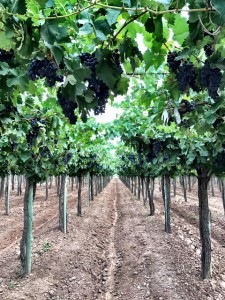 Arriving: End of April
Arriving: End of April
Grape Varieties: Malbec
Vineyard Information: The first Cantinian vineyard was planted in 1923 in Mendoza, Argentina. As of 2012, the wine grapes grown in the Cantinian vineyards were certified organic by Argencert (in conjunction with the USDA Organic Certification) and accredited by Global Program IFOAM. The vineyards are situation on elevated terrain with views of the Andes Mountains. Read more about the Argentina Malbec here
Yeast Suggestions:
- Malbec: D254: Brings out bright fruit flavors and complexity such as berry, plum, and mild spice.
Chile
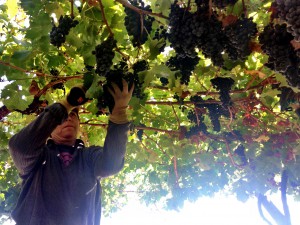 Arriving: End of April, beginning of May
Arriving: End of April, beginning of May
Grapes Varieties: Carmenere, Cabernet Sauvignon, Cabernet Franc, Malbec, Merlot, Petite Verdot, Pinot Noir, Syrah, Chardonnay, Pinot Grigio, Sauvignon Blanc, and Viognier
Juice Varieties: Carmenere, Cabernet Sauvignon, Cabernet Franc, Cabernet/Merlot Blend, Malbec, Merlot, Petite Verdot, Pinot Noir, Syrah, Chardonnay, Pinot Grigio, Sauvignon Blanc, and Viognier
Fresco Juice Varieties: Cabernet Sauvignon, Carmenere, Merlot, Malbec, Chardonnay, Sauvignon Blanc, Viognier, Chardonnay/Semillon Blend
Vineyard Information: The growing season for the Curico and Colchagua Valley’s was a hot and dry one. Expect wines with great character, intense flavors, complexity, and distinction. We should be receiving grapes around the same time as last year, maybe a little earlier for the whites. Read more here for more information on the Chilean Harvest.
Yeast Suggestions:
- Cabernet: CSM – New Yeast Coming to Musto Wine Grape in the Spring!, Keep an eye for a blog post about in on Thursday’s Winemaker Think Tank!
- Malbec: D254: Brings out bright fruit flavors and complexity such as berry, plum, and mild spice.
- Carmenere: D254: Brings out bright fruit flavors and complexity such as berry, plum, and mild spice or BDX: Promotes soft tannins, secures color, and ferments at low heat.
- Chardonnay: QA23: Promotes apple and pear notes or VIN13: Heightens pineapple and tropical notes
- Sauvignon Blanc: R2: Promotes fruity and floral notes or 71B: Brings out grapefruit notes and other tropical fruits or QA23: Promotes apple and pear notes or VIN13: Heightens pineapple and tropical notes
So pour yourself a glass of wine and give us a call or shoot us an email to secure your Pre-Order Today!







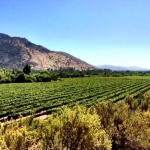
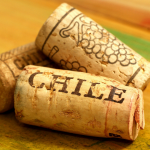
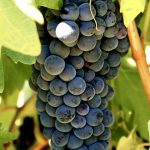


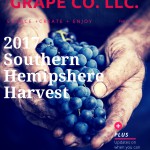
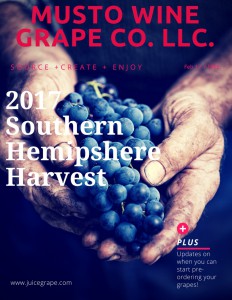
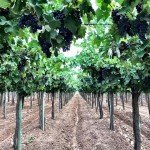

Recent Comments